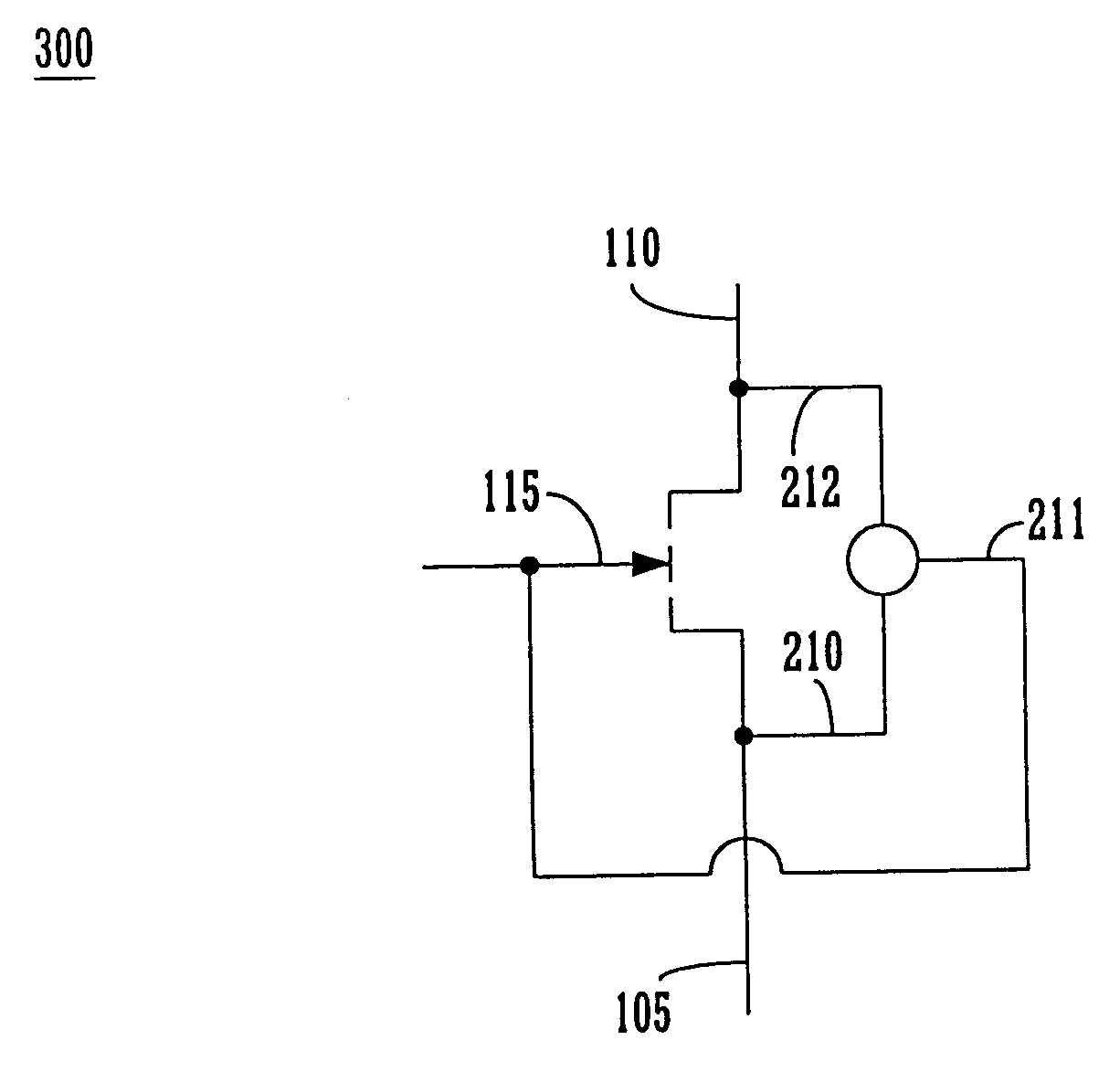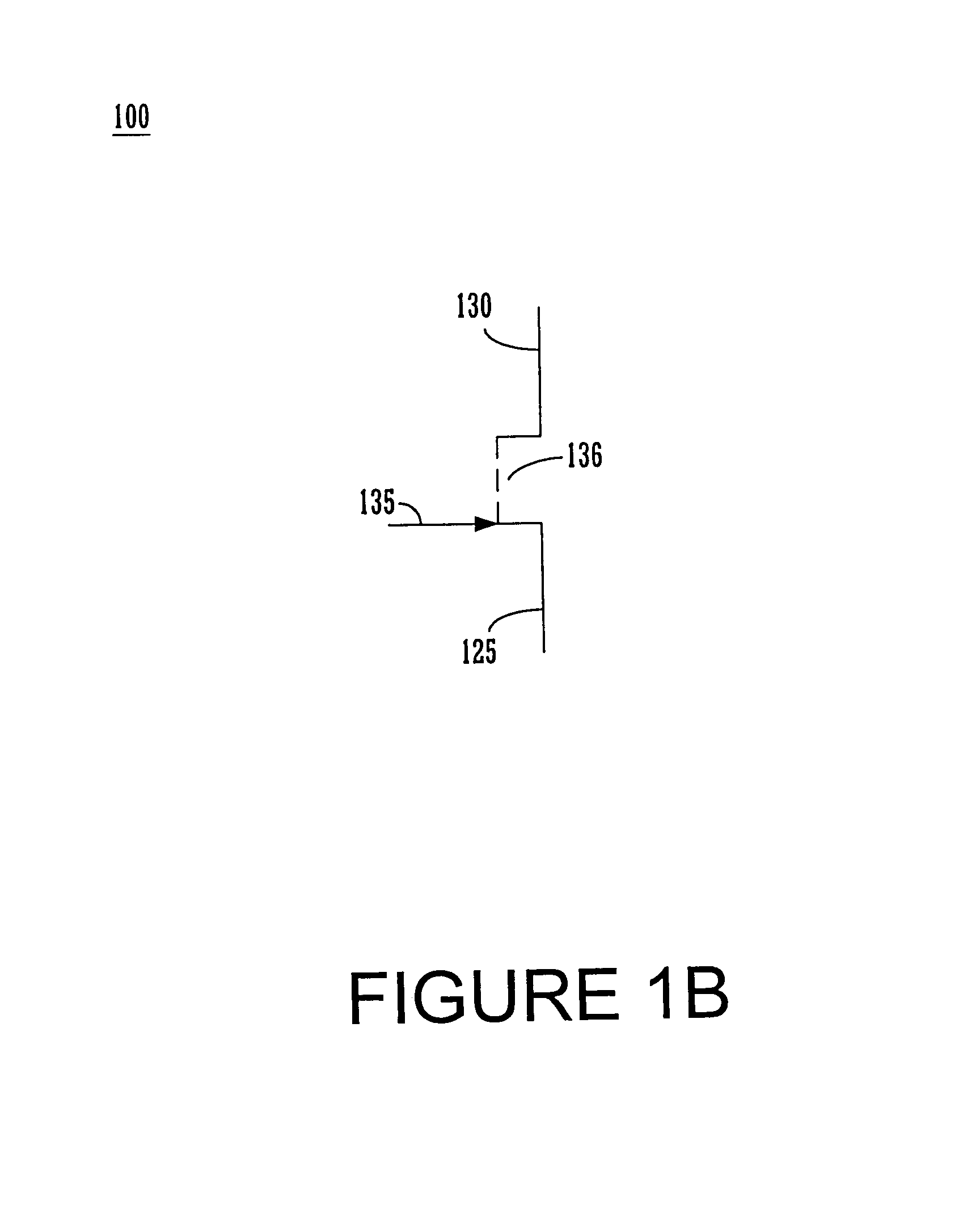Starter device for normally off JFETs
a silicon diode rectifier and starter technology, applied in semiconductor devices, electronic switching, pulse techniques, etc., can solve the problems of inability to handle the large currents frequently required, excessive power loss in the diodes, and inability to meet the needs of low voltage applications. , to achieve the effect of high current carrying capacity, easy switching between states, and high current carrying capacity
- Summary
- Abstract
- Description
- Claims
- Application Information
AI Technical Summary
Benefits of technology
Problems solved by technology
Method used
Image
Examples
Embodiment Construction
[0028]In the following detailed description of the present invention, starter device for normally off FETs, numerous specific details are set forth in order to provide a thorough understanding of the present invention. However, it will be obvious to one skilled in the art that the present invention may be practiced without these specific details. In other instances well known methods, procedures, components, and circuits have not been described in detail as not to unnecessarily obscure aspects of the present invention.
[0029]FIG. 1 shows the electronic symbols used in the present invention to represent three different normally off FETs 100. FIG. 1a is the electronic symbol used to represent an n-channel, symmetrical, normally off JFET. The gate lead 115 is spaced equidistant between the source lead 105 and the drain lead 110 which identifies this as a symmetrical device. The direction of the arrow on the gate lead signifies an n-channel JFET. The broken line 116 between source and dr...
PUM
 Login to View More
Login to View More Abstract
Description
Claims
Application Information
 Login to View More
Login to View More - R&D
- Intellectual Property
- Life Sciences
- Materials
- Tech Scout
- Unparalleled Data Quality
- Higher Quality Content
- 60% Fewer Hallucinations
Browse by: Latest US Patents, China's latest patents, Technical Efficacy Thesaurus, Application Domain, Technology Topic, Popular Technical Reports.
© 2025 PatSnap. All rights reserved.Legal|Privacy policy|Modern Slavery Act Transparency Statement|Sitemap|About US| Contact US: help@patsnap.com



